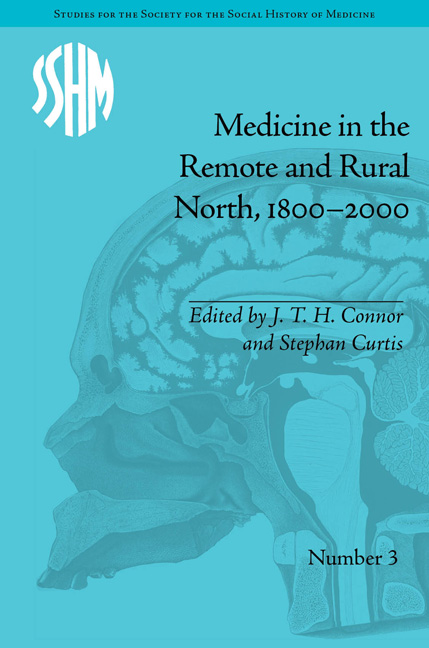Book contents
- Frontmatter
- CONTENTS
- Acknowledgements
- List of Contributors
- List of Figures and Tables
- Introduction: Cores/Peripheries – Rural/Remote: Medicine, Health-Care Delivery and the North
- Part I Remote Medicine and the State
- 1 Medical Services in a Northern Russian Province, 1864–1917
- 2 Changing Minority Culture: Health Services and Health Promotion in Northern Norway, 1900–50s
- 3 The Sami, Sami-ness and the Staffing of Health Services in Northern Norway, 1960s–2001
- 4 Foreshadowing the Future: Health Services in Remote Areas, the National Health Service and the Highlands and Islands of Scotland, 1948–74
- Part II Doctors and Doctoring in Remote Areas
- Part III Women, Health Care and the Practice of Medicine
- Notes
- Index
2 - Changing Minority Culture: Health Services and Health Promotion in Northern Norway, 1900–50s
from Part I - Remote Medicine and the State
- Frontmatter
- CONTENTS
- Acknowledgements
- List of Contributors
- List of Figures and Tables
- Introduction: Cores/Peripheries – Rural/Remote: Medicine, Health-Care Delivery and the North
- Part I Remote Medicine and the State
- 1 Medical Services in a Northern Russian Province, 1864–1917
- 2 Changing Minority Culture: Health Services and Health Promotion in Northern Norway, 1900–50s
- 3 The Sami, Sami-ness and the Staffing of Health Services in Northern Norway, 1960s–2001
- 4 Foreshadowing the Future: Health Services in Remote Areas, the National Health Service and the Highlands and Islands of Scotland, 1948–74
- Part II Doctors and Doctoring in Remote Areas
- Part III Women, Health Care and the Practice of Medicine
- Notes
- Index
Summary
A fundamental feature of Norwegian public health work since the 1860s has been the conviction that reforming popular culture could prevent disease and promote health. The aim of many medical doctors and state public health officials in late nineteenth- and early twentieth-century Norway was to inculcate a healthy ‘culture’ where it was deemed absent. The culture promoted was one defined as healthy by mostly middle-class medical doctors and representatives of the state medical establishment; the lifestyles and ‘bad habits’ that were to be changed or discarded altogether could vary depending on factors relating to gender, class, or spatial dimensions – for example, rural and remote regions.
Ethnic minorities have historically represented a challenge for public health work. The habits and ways of living among such minorities could be – and often were – deemed as ‘foreign’ and condemnable by the medical establishment, which subjected these populations to vigorous campaigns of cultural change. This was, of course, also the case with the Norwegian rural population after the 1860s and the urban working class from the turn of the twentieth century. Ethnic minorities posed an additional challenge because of language: both the straightforward issue of how to convey a health message to a population that did not always understand the Norwegian language, but also more complex issues pertaining to the relationship between language, culture and health.
- Type
- Chapter
- Information
- Medicine in the Remote and Rural North, 1800–2000 , pp. 39 - 56Publisher: Pickering & ChattoFirst published in: 2014



